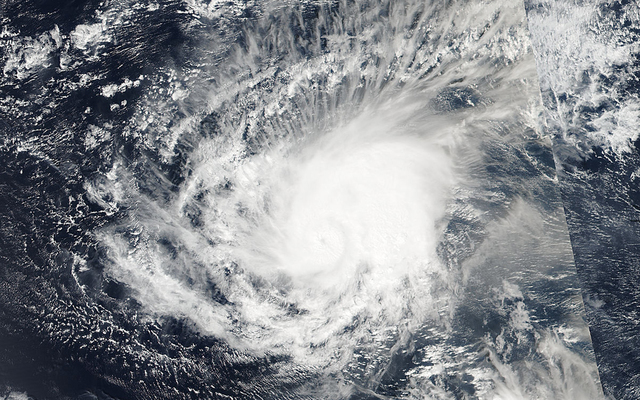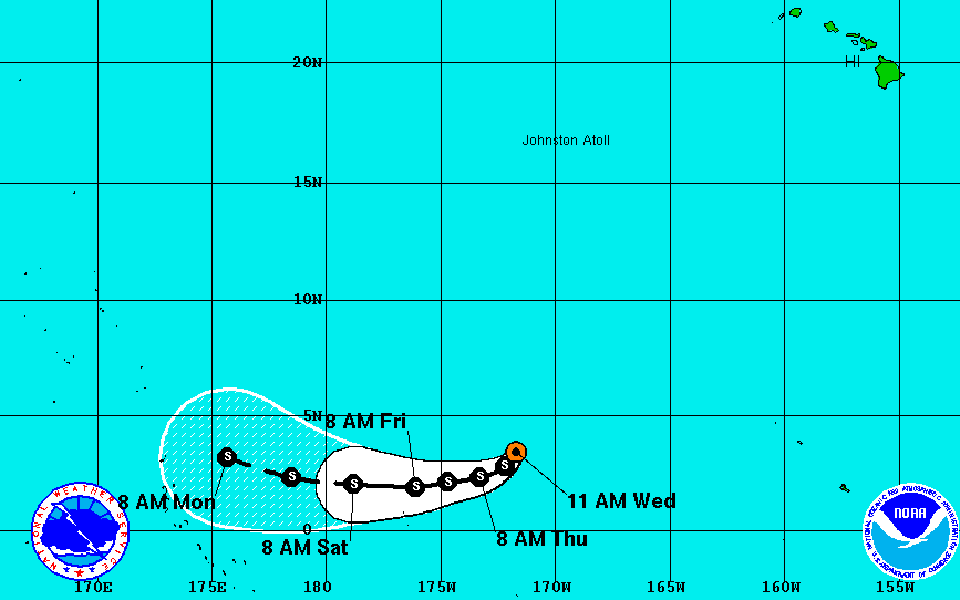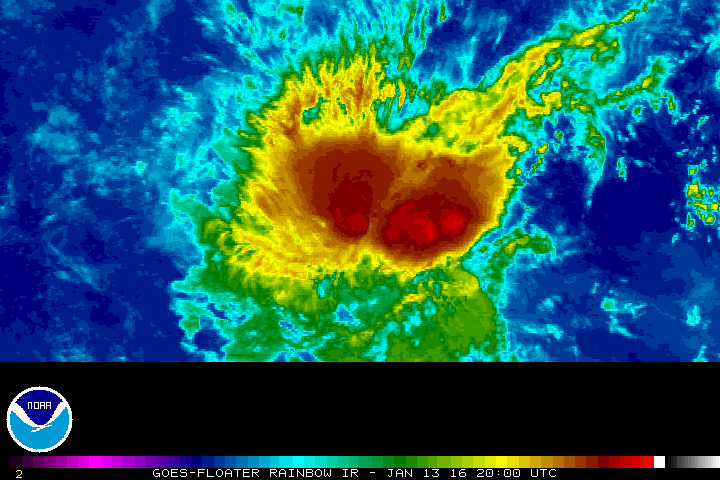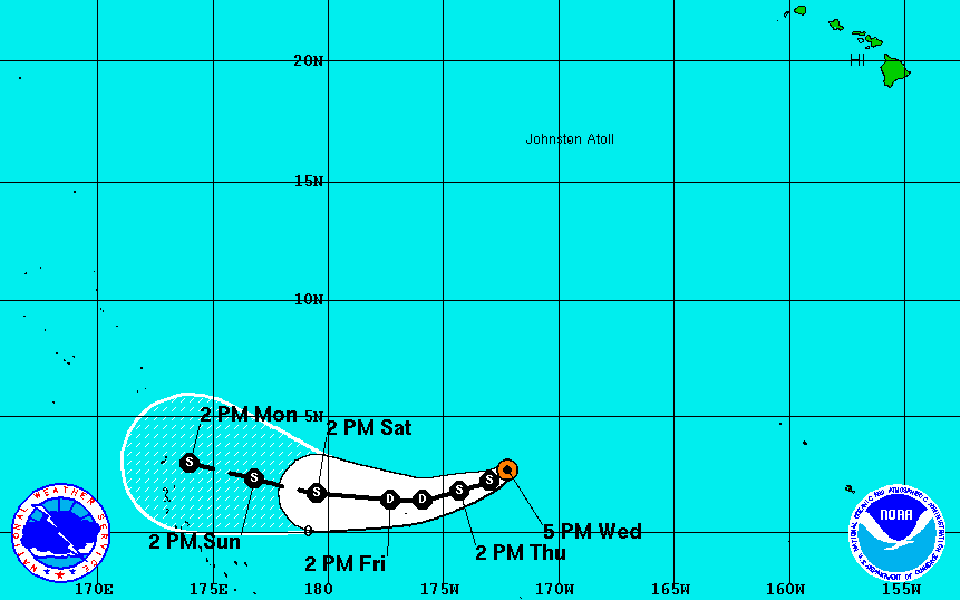Pali weakens to tropical storm as it nears equator

COURTESY NOAA
Hurricane Pali weakened as it continued moving south-southwest this morning.

COURTESY NASA/NOAA
NASA/NOAA’s Suomi NPP satellite captured this visible light image of Hurricane Pali in the Central Pacific Ocean today.

CENTRAL PACIFIC HURRICANE CENTER
Hurricane Pali is likely to weaken to to a tropical storm and turn to the west as it skirts the equator over the next five days.

COURTESY NOAA
Pali weakened to a tropical storm as it continued moving south-southwest this morning.

COURTESY NASA/NOAA
NASA/NOAA’s Suomi NPP satellite captured this visible light image of then-Hurricane Pali in the Central Pacific Ocean today.

CENTRAL PACIFIC HURRICANE CENTER
Pali weakened to a tropical storm and is expected to turn to the west as it skirts the equator over the next five days.

COURTESY NOAA
Pali weakened to a tropical storm as it continued moving south-southwest today.

CENTRAL PACIFIC HURRICANE CENTER
Pali weakened to a tropical storm and is expected to turn to the west as it skirts the equator over the next five days.








Pali has weakened to a tropical storm as it continues moving south on an unusual journey near the equator.
“We generally don’t see systems this far south,” said Bob Burke, a meteorologist with the Honolulu office of the National Weather Service. “There are no records of any systems crossing the equator.”
The reason hurricanes haven’t crossed and are rarely seen near the equator has to do with the physics of the rotation of the earth — something called the Coriolis effect. It’s why hurricanes spin counter-clockwise in the Northern Hemisphere and clockwise in the Southern Hemisphere.
The Coriolis effect helps hurricanes form and generally sends storms spinning north in the Central and Western Pacific, rather than south toward the equator, said Michael Bell, an assistant professor of atmospheric sciences at the University of Hawaii-Manoa.
Waters near the equator are warmer than usual because of El Nino, said Gary Barnes, the chairman of the Atmospheric Sciences department at UH-Manoa. There are also strong westerly winds near the equator that may have helped Pali develop, Barnes said in an e-mail.
Pali, the earliest tropical cyclone to form in the Central Pacific, apparently peaked as a category 2 hurricane with winds of 100 mph Tuesday, more than 1,400 miles southwest of Honolulu and about 350 miles north of the equator.
Don't miss out on what's happening!
Stay in touch with breaking news, as it happens, conveniently in your email inbox. It's FREE!
But the storm appears to be weakening due to southwesterly windshear and the Coriolis effect as it nears the equator.
At 5 p.m. today, Pali had sustained winds of 65 mph, down from 80 mph earlier in the day. The storm continued to move south-southwest toward the equator at 9 mph.
The storm is predicted to take a turn to the west as it skirts within 200 miles of the equator.
Forecasters note, however, that because hurricanes are not normally seen near the equator, there is “higher than normal uncertainty” about how Pali will behave at such low latitudes.
Can Pali become the first tropical cyclone to cross the equator?
It’s possible, but appears unlikely at this point.
Pali’s winds may be strong enough to continue moving counter-clockwise even as the Coriolis effect works against it.
But if Pali crosses into the Southern Hemisphere, it will likely weaken quickly because of the Coriolis force in the opposite direction.
“If Pali can survive its close encounter with the equator, re-intensification will be possible as it moves into the Western Pacific,” forecasters said. One computer model has it regaining hurricane strength in the West Pacific.
Should it survive, the storm’s track could take it close to Howland and Baker islands Friday and possibly the Marshall Islands next week.
6 responses to “Pali weakens to tropical storm as it nears equator”
Leave a Reply
You must be logged in to post a comment.





Dumb headline for an article that has no application to Hawaii. But the headline doesn’t tell you.
I note the reliance on the UH atmospheric scientists. They do a great job. UH is so important for this state. Skip the silly fuzball program and support our academics!
Actually the best information on hurricanes come from the University of Wisconsin . . .
No Hon..Colorado State University’s atmospheric sciences is tops.
“Destiny” is a tiny island (4 square miles) located just 40 miles south of the equator. It is inhabited by all the original writers of all the world’s dirty jokes. Google “The Splendid Source” for more information.
“March toward destiny”? Does Craig Gima think he’s writing for a high school paper or something? What a weird, nonsensical headline.